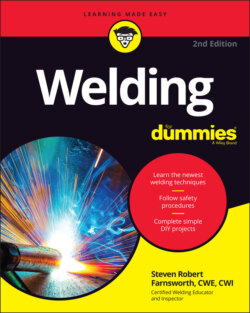Читать книгу Welding For Dummies - Steven Robert Farnsworth - Страница 45
Perusing the properties of aluminum
ОглавлениеSo what makes aluminum so special? For starters, it reacts with oxygen in the air and produces a very tough oxide film on the surface. This aluminum oxide is extremely durable, and it effectively protects the metal underneath it. (That’s why aluminum is so resistant to corrosion.)
The aluminum oxide film that covers pieces of aluminum that have been exposed to the air for long periods of time has a higher melting point (3,600 degrees Fahrenheit) than the pure aluminum underneath it (1,200 degrees Fahrenheit). For this reason, you have to remove the film before you can weld aluminum.
Aluminum conducts heat about five times better than steel, and interestingly, it doesn’t change color when you heat it up. (Steel, of course, turns all kinds of different colors as you heat it up to different temperatures.) It weighs about one-third as much as steel.
Pure aluminum is a popular choice for welders, but many different aluminum alloys have also been developed. A classification system of four-digit numbers has been created to identify the various aluminum alloys. The first digit is the really critical one because it tells you what is included (other than aluminum, of course) in the alloy. Here are the details:
1XXX: Unalloyed aluminums made up of at least 99 percent pure aluminum
2XXX: Copper
3XXX: Manganese
4XXX: Silicon
5XXX: Magnesium
6XXX: Silicon and magnesium
7XXX: Zinc
8XXX: Other materials (tin is one example)
The two types of aluminum you’ll probably weld most often are pure aluminum and aluminum alloy 3003.
Recycle your old aluminum! Almost two-thirds of the aluminum used today has been recycled, and that’s the environmentally responsible thing to do.
